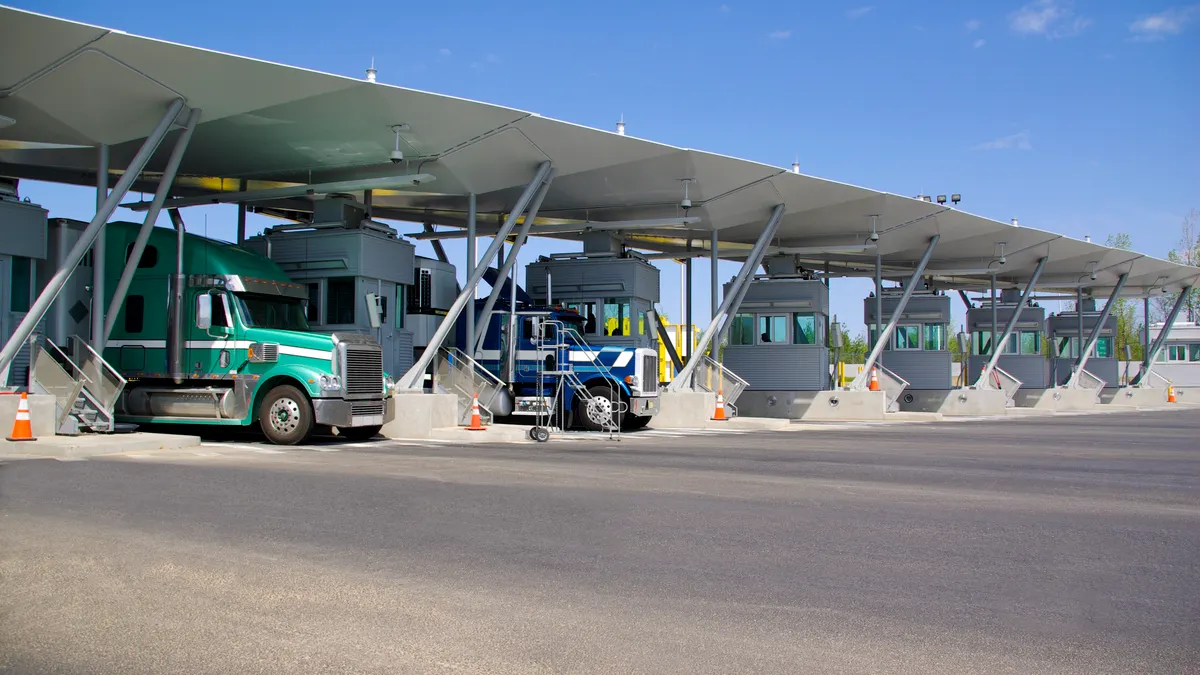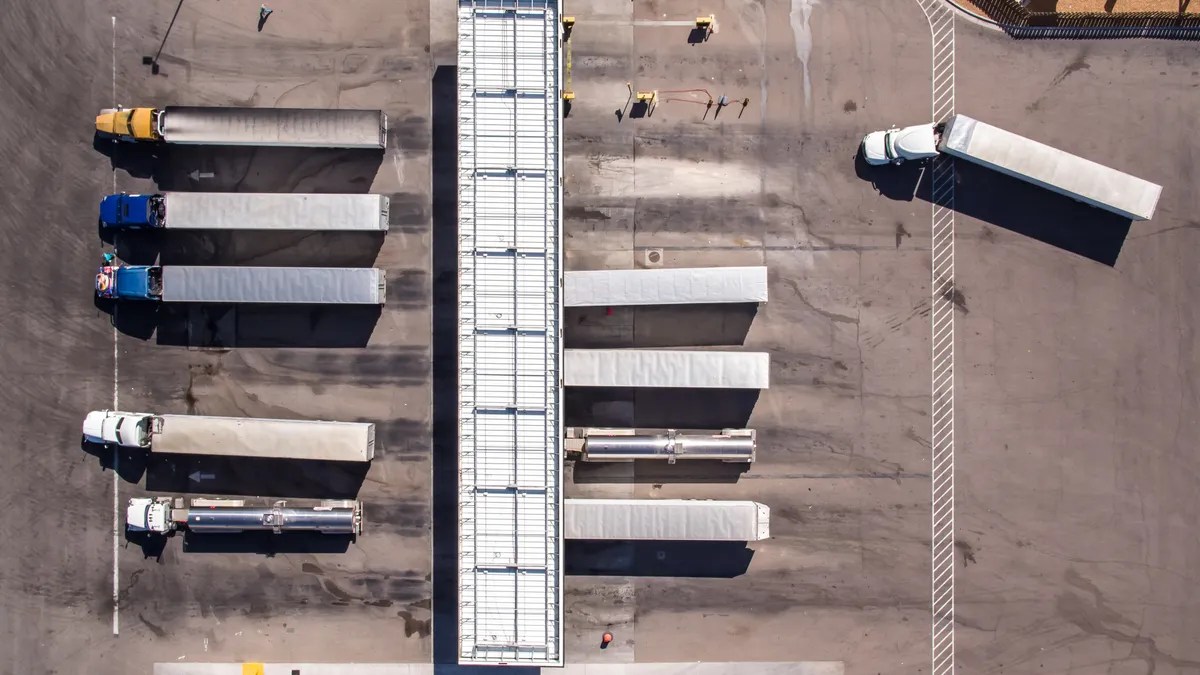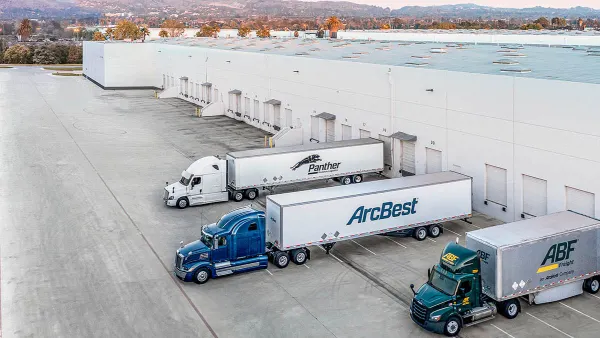Dive Brief:
- Diesel prices stopped a 19-week decline on Tuesday, when the U.S. Energy Information Administration (EIA) reported the average U.S. price per gallon rose 0.4 cents to $2.390 per gallon. The price is 76.1 cents cheaper than a year ago, according to the EIA.
- Oil has been on the rise even longer, after West Texas Intermediate oil hit a record low of negative $37.63 a barrel on April 20, as the deadline for May delivery approached and inventories filled up, leaving traders with few places to keep their oil. WTI oil was trading at about $33 per barrel on Wednesday.
- Oil is up 75% in May, according to Bloomberg. The emboldened oil prices come as oil inventories decline, and as Saudi Arabia and Russia continue talks to curb output, perhaps by as much as 10 million barrels a day, a move President Donald Trump supports.
Dive Insight:
As diesel prices rise, fleets will likely make more aggressive use of added technology and aerodynamics to control diesel costs, which is usually a fleet's second-largest expense, after driver compensation. An average fuel cost is 43.3 cents per mile, according to the American Transportation Research Institute (ATRI).
XPO told Transport Dive it distributes an app to company and affiliated drivers to find the cheapest possible fuel. During the height of the COVID-19 woes, one XPO driver scored the price of $1.08 per gallon outside of New Orleans, according to Drew Wilkerson, the president of XPO's North American Transportation business.
Cheap oil and diesel wasn't a winner for every fleet. As oil began to decrease last year, Stevens Transport shuttered its tanker division in October, laying off 576 drivers and idling about 853 trucks. The tankers were not as needed for shale operations, which require sand and water to be brought in.
Now, an increase in diesel and crude oil prices indicates a step toward global economic recovery and a continuing decline in oil-production investment, according to Phil Flynn, an analyst with the Price Futures Group.
"The subzero prices scared a lot of people away," Flynn told Transport Dive. "We have seen a 50% decline in shale investment."
When investment in production shrinks, oil inventories shrink, Flynn said. Also complicating oil production is the shrinking number of operating oil rigs, Flynn said.
Diesel also saw increased demand earlier than expected, Flynn said, as North American farmers came out to their fields sooner than expected. Farm machinery is a large consumer of diesel.
Problems still remain. Demand for gasoline over the holiday weekend was down more than 25% from the holiday weekend a year before, according to Bloomberg. But Flynn does not see a return to the pandemic-low prices of March and April, foreseeing an economic and an oil-price recovery that lasts.
"The era of low oil prices will come to an end slowly but surely," said Flynn, who said higher oil and diesel prices will likely last at least two years.
The higher diesel price was predicted by industry officials, one of whom told Transport Dive earlier this month that trucking has seen cheap fuel before, and that it likely won't deter efficiency investments.
"We've dropped to $2 diesel before," said Mike Roeth, executive director of the North American Council for Freight Efficiency (NACFE). "It always comes back."








